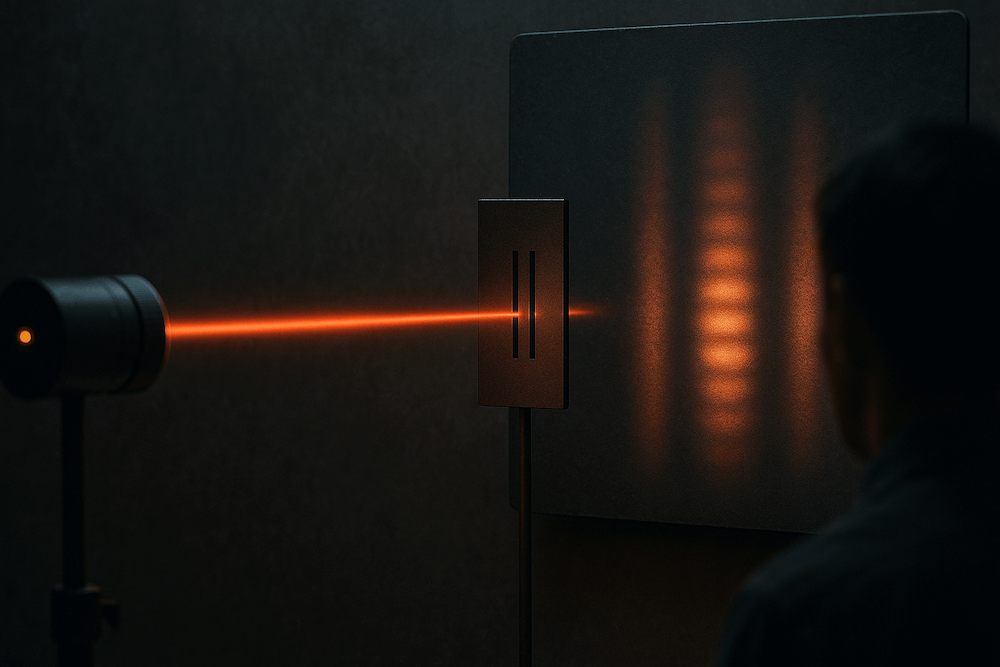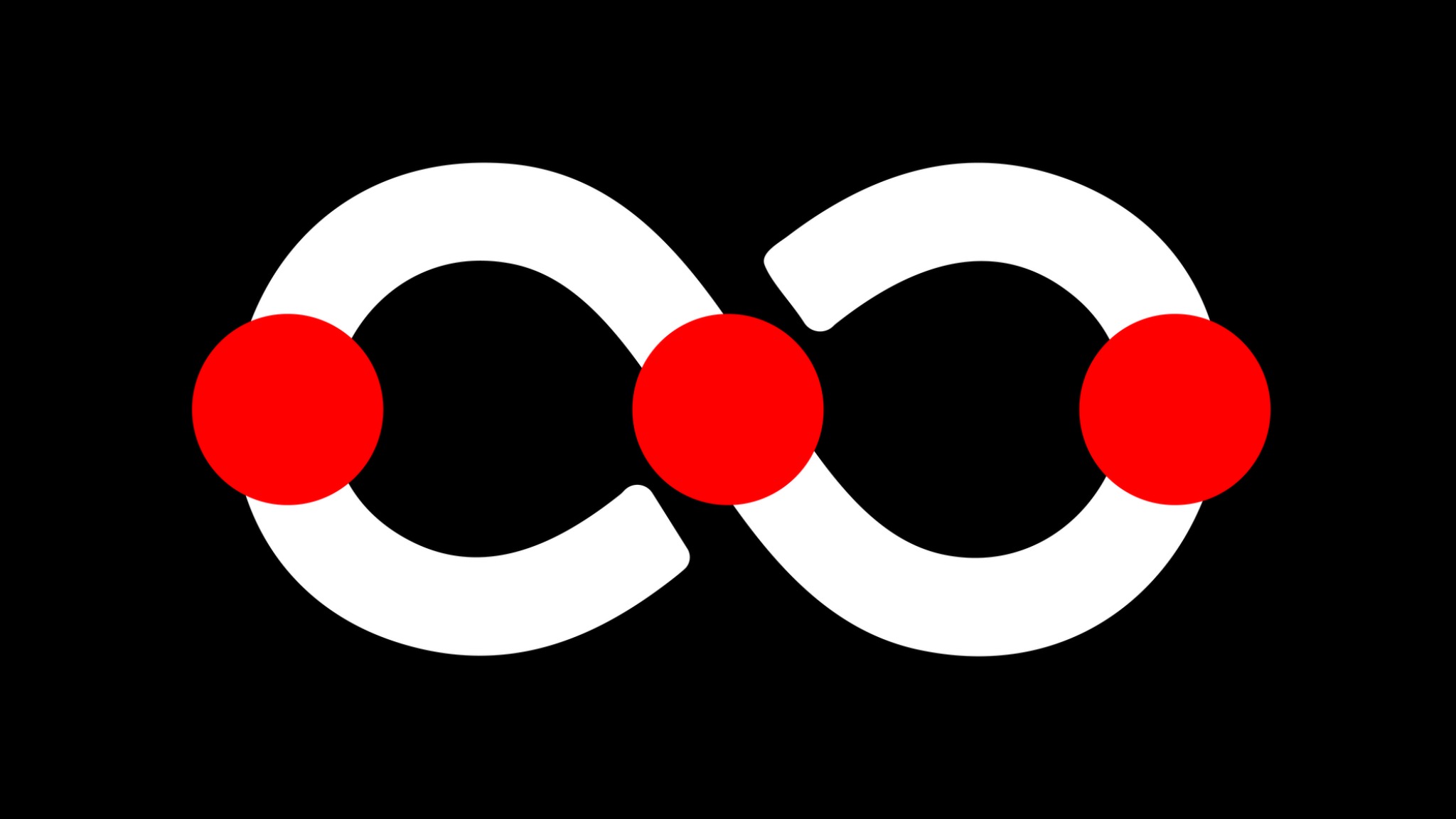In the pantheon of physics experiments that challenge our understanding of reality, the double-slit experiment stands as perhaps the most perplexing and revolutionary. When consciousness meets quantum mechanics, the very nature of existence itself comes into question.
The Classical Foundation: Young's Original Experiment
The story begins in 1801 when British physicist Thomas Young designed an elegant experiment to settle a fundamental question: Is light a wave or a particle? By shining light through two parallel slits onto a screen, Young observed something remarkable—an interference pattern of alternating bright and dark bands. This pattern could only be explained if light behaved as a wave, with the waves from each slit interfering with each other constructively and destructively.
For over a century, this result seemed to definitively establish light's wave nature. The mathematics were clear: when waves pass through two openings, they create characteristic interference patterns where crests and troughs either amplify or cancel each other out.
The Quantum Revolution: Particles That Act Like Waves
The quantum era fundamentally transformed our understanding of the double-slit experiment. In 1927, Clinton Davisson and Lester Germer, along with George Paget Thomson and Alexander Reid, independently demonstrated that electrons—undeniably particles—could also produce interference patterns when passed through double slits.
This discovery revealed the profound principle of wave-particle duality: quantum objects exhibit both particle and wave characteristics depending on how they are observed. A single electron, fired through the apparatus, somehow passes through both slits simultaneously and interferes with itself to create the familiar striped pattern.
The implications were staggering. As physicist Richard Feynman famously declared, the double-slit experiment contains "the only mystery" of quantum mechanics—all other quantum puzzles are variations of this fundamental phenomenon.
The Observer Effect: When Watching Changes Everything
The most mind-bending aspect of the double-slit experiment emerges when we attempt to determine which slit a particle passes through. The moment we place detectors at the slits to observe the particle's path, something extraordinary happens: the interference pattern vanishes entirely.

When observed, particles behave like classical objects, passing through one slit or the other and creating two simple bands on the screen—exactly what we would expect from particles. But when unobserved, they create the wave-like interference pattern, as if each particle passes through both slits simultaneously.
"The quantum world doesn't exist until we look at it. Reality is created by observation." - John Wheeler
This phenomenon, known as the observer effect, suggests that the very act of measurement fundamentally alters the nature of quantum reality. The question isn't just "which slit did the particle go through?" but rather "what does it mean for a particle to 'go through' a slit before it's observed?"
Decoherence: The Modern Understanding
Contemporary physics has provided a more nuanced explanation for the observer effect through the theory of quantum decoherence. Rather than requiring a conscious observer, decoherence explains how quantum systems lose their wave-like properties through interaction with their environment.
When a detector measures which slit a particle passes through, it necessarily interacts with the particle—perhaps by bouncing photons off it or creating electromagnetic fields. These interactions entangle the particle with the measuring device and, crucially, with the surrounding environment. This entanglement causes the quantum superposition to "decohere" into classical states.
The environment acts as an omnipresent observer, with air molecules, photons, and electromagnetic fields constantly interacting with quantum systems. For macroscopic objects, decoherence happens so rapidly that we never observe quantum superpositions in everyday life.
Wheeler's Delayed Choice: Challenging Causality
In 1978, physicist John Wheeler proposed a thought experiment that pushed the boundaries of quantum weirdness even further. In Wheeler's delayed-choice experiment, the decision to measure particle or wave behavior is made after the quantum object has allegedly already passed through the slits.
Wheeler imagined cosmic-scale versions where light from distant quasars, bent around galaxies by gravitational lensing, could be observed either as particles or waves depending on last-minute decisions made on Earth—potentially billions of years after the photons had "chosen" their paths through space.
Subsequent experiments have confirmed Wheeler's predictions: the choice of measurement apparatus, even when made after the quantum event, determines whether particle or wave behavior is observed. This suggests that quantum objects exist in a superposition of possibilities until measurement forces them into definite states.
The Quantum Eraser: Recovering Lost Information
The delayed-choice quantum eraser, first demonstrated by Yoon-Ho Kim and colleagues in 1999, takes quantum weirdness to its logical extreme. This experiment uses entangled photon pairs to seemingly recover interference patterns even after "which-path" information has been obtained.
In this setup, one photon passes through the double-slit apparatus while its entangled partner is measured in various ways. Remarkably, the interference pattern can be recovered by erasing the which-path information from the entangled partner, even after the first photon has been detected.
However, careful analysis reveals that no information travels backward in time. The interference pattern only emerges when data from both detectors is combined and analyzed using coincidence counting. The experiment demonstrates quantum correlations and the non-local nature of entanglement rather than retrocausality.
Interpretations and Implications
The double-slit experiment and observer effect have spawned numerous interpretations of quantum mechanics:
Copenhagen Interpretation
The most widely accepted view holds that quantum systems exist in superposition until measurement causes wave function collapse. The measurement process is fundamental and irreducible.
Many-Worlds Interpretation
Every quantum measurement splits reality into parallel branches. In one branch, the particle goes through the left slit; in another, it goes through the right slit. We observe only one branch.
De Broglie-Bohm Theory
Particles have definite positions and velocities guided by a "quantum potential." The wave function provides information about this hidden variable theory.
Objective Collapse Theories
Physical processes beyond those described by standard quantum mechanics cause spontaneous wave function collapse, making observation just one trigger among many.
The Consciousness Question
While popular interpretations sometimes suggest that consciousness itself collapses wave functions, scientific evidence points to physical interactions rather than mental processes as the key factor. The observer effect doesn't require human consciousness—any physical interaction that extracts information about the quantum system's state will cause decoherence.
As physicist Werner Heisenberg noted: "What we observe is not nature itself, but nature exposed to our method of questioning." The double-slit experiment reveals that reality at the quantum level is fundamentally different from our everyday experience—it exists in a realm of possibilities until the act of observation forces it into definite states.
Modern Applications and Technology
Understanding the observer effect has practical implications beyond philosophical puzzles. Quantum computing relies on maintaining superposition states while preventing premature decoherence. Quantum cryptography exploits the fact that observation necessarily disturbs quantum states, providing unbreakable security protocols.
Researchers continue developing techniques to fight decoherence through quantum error correction, dynamical decoupling, and improved isolation methods. The goal is to harness quantum effects while minimizing unwanted environmental interactions.
The Continuing Mystery
Despite nearly a century of study, the double-slit experiment continues to reveal new aspects of quantum mechanics. Recent experiments have extended the phenomenon to increasingly large molecules, with interference patterns observed for complex carbon-based structures containing hundreds of atoms.
The fundamental question remains: What constitutes a measurement? Where exactly does the quantum realm give way to classical reality? These questions drive ongoing research into the measurement problem and the quantum-to-classical transition.
As Wheeler himself noted, the double-slit experiment teaches us that "we should not have any naive realistic picture for interpreting quantum phenomena." The experiment reveals that reality at its most fundamental level is far stranger and more interconnected than our classical intuitions suggest.
Conclusion: The Heart of Quantum Mechanics
The double-slit experiment and observer effect represent more than just curious laboratory phenomena—they reveal the fundamental nature of reality itself. The experiment shows us that the classical world of definite objects with fixed properties emerges from an underlying quantum realm of possibilities and correlations.
While the observer effect doesn't require consciousness to collapse wave functions, it does demonstrate that observation—in the sense of physical interaction and information extraction—plays a crucial role in shaping the reality we experience. The universe at its most basic level appears to be participatory, with observers and observed locked in an intricate dance that determines the nature of what we can know.
As we continue to probe the quantum realm and develop technologies that exploit quantum effects, the double-slit experiment remains our most direct window into the strange, beautiful, and fundamentally mysterious nature of reality. It reminds us that the universe is far more subtle and interconnected than our everyday experience suggests, and that the act of observation itself is woven into the very fabric of existence.
